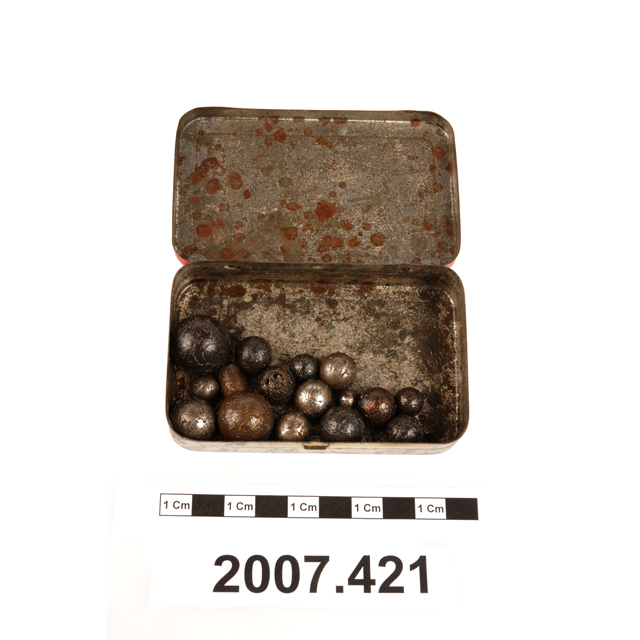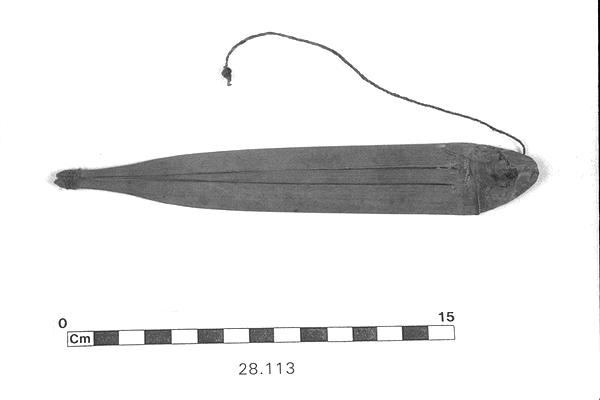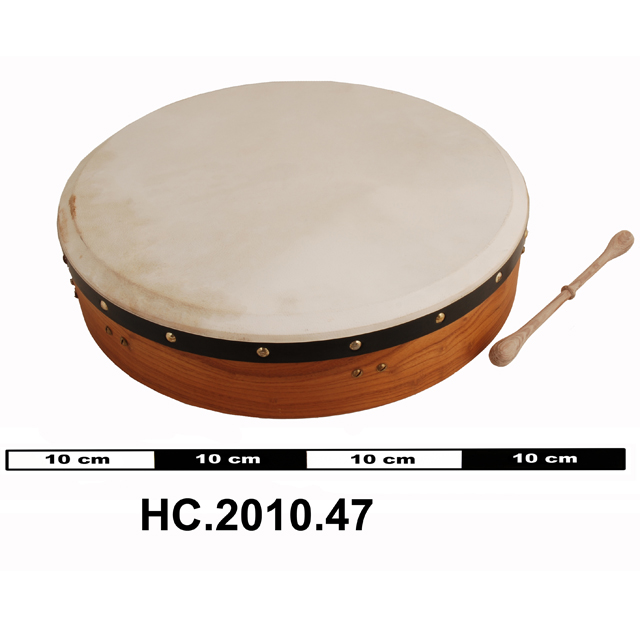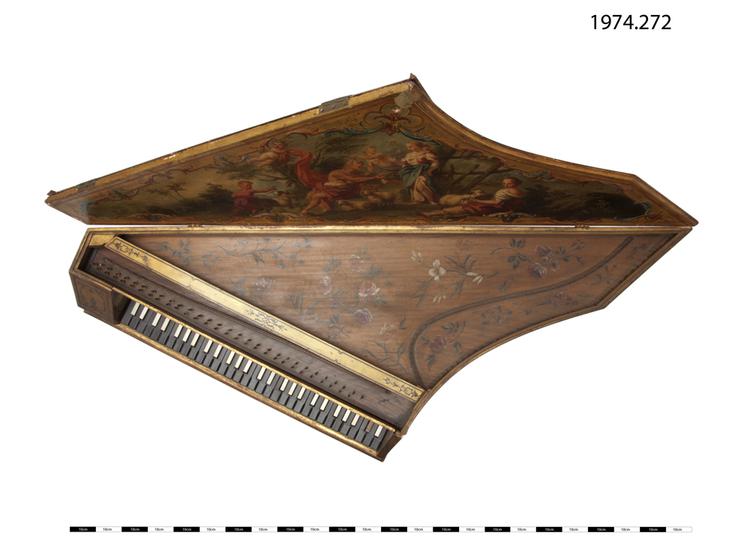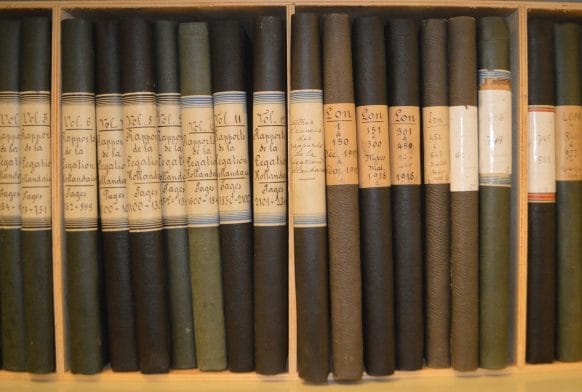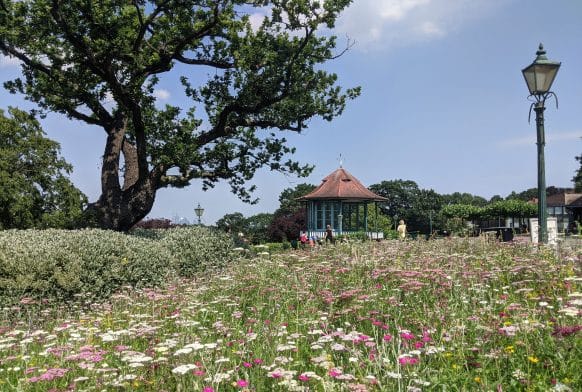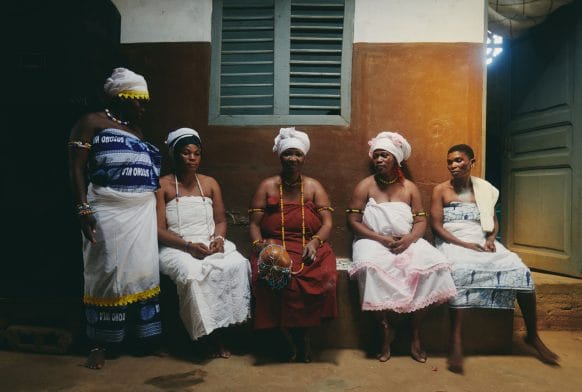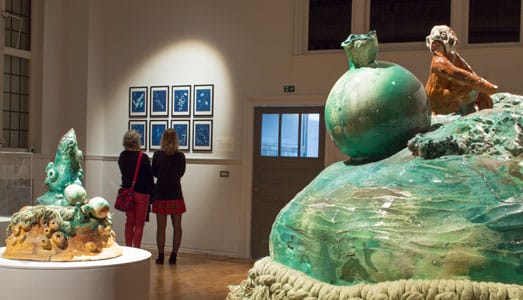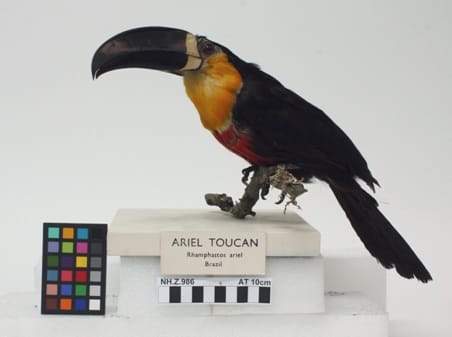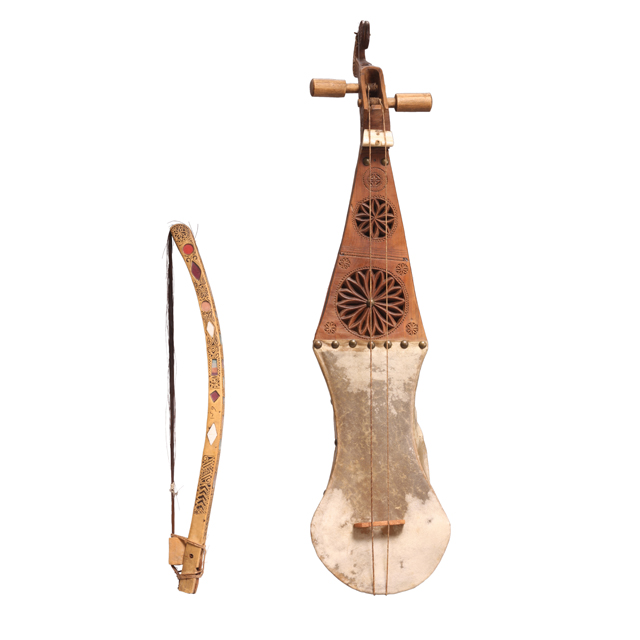
Rebab, two-stringed fiddle, with bow. Of an elongated fiddle shape with a triangular neck merging with the upper bout. The body and neck are carved like a round-backed trough out of a solid piece of wood. Two small holes are cut into the sides at the point where the neck begins to taper. The pegbox is separate and is elongated into a sickle-shaped scroll, with elaborate carving in geometrical patterns. Two pegs with fat cylindrical ends are set in violin fashion. High bone nut. No separate fingerboard although there is a plate covering the hollow neck; this is carved with two roses in petal pattern and also with chipcarved roundels. No belly, a parchment membrane is tacked over the lower body using brass nails. Flat bridge; one string may have functioned as a drone. No tailpiece, the strings are attached to an ivory dead-eye on the end of the instrument. End of scroll broken. Base of pegbox loose. Bow: Outward curing, heavy stick of rectangular section. A truncated wedge of wood is attached by cords and can be used to tension the string. Hair held flat by wool darned around the strands. Decorated with carving coloured with composition and also with pieces of woollen cloth under pieces of glass. The decoration is only found on the top and the side that would be held towards the player. This seems to indicate that the instrument was intended to be held downwards with the bow angled towards the bridge.



